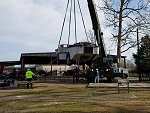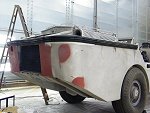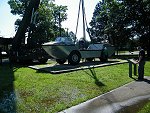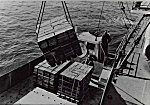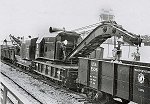|
|
|||||||||||||||||||||||||||
|
Fort Eustis Page 3 |
|||||||||||||||||||||||||||
|
U.S. Army Transportation Museum The U.S. Army Transportation Museum, a museum of U.S. Army vehicles and other transportation related equipment, and memorabilia, is located on the grounds of Fort Eustis. |
|||||||||||||||||||||||||||
|
|
|||||||||||||||||||||||||||
|
Merry Christmas In the 1950's Santa takes a ride on the first production model BARC LX (Barge Amphibious Resupply Cargo). (Date and location unknown)The BARC was the largest of three vehicles designed to replace the WW II DUKW. To Santa's advantage the BARC could carry 60 tons of cargo. Though never officially seeing service with Santa, these beasts did see service in Greenland and Vietnam and would remain in the Army inventory until retired in 2000. |
|||||||||||||||||||||||||||
|
The "Mike" Boat - LCM-6 - Landing Craft, Mechanized! Come and see our watercraft in the Marine yard - including this "Mike" Boat! The Hull Number for the LCM-6 at the Transportation Museum is 200132. After the First World War and the British seaborne invasion failure at Gallipoli, both America and the United Kingdom began working on a class of vessels designed to be troop carriers launched just off shore from transports. These ships were to then beach themselves, discharge their soldiers and vehicles, and head back for another load from their mother ship. Over time, this style of boat became designated as "Landing Craft, Mechanized." The LCM-3, built by Higgins, was the most widely used LCM in World War II. The design was sound, but improvements were always being sought. In the later stages of the war, when engineers had more time to examine the LCM-3's flaws and strengths, a new boat began to emerge as the LCM-6. The LCM-6 took the Higgins style and extended the hull six feet in length amidships. This increased the carrying capacity without hampering performance, upping the number of soldiers carried from 60 to 80, and allowing for four additional tons of cargo to be loaded, resulting in a total hauling capacity of 68,000 pounds! 68,000 pounds = ELEVEN female Asian Elephants PLUS NINE newborn Asian Elephants!! Performing admirably when used, the LCM-6 gradually overtook the Higgins as the favored landing craft type. |
|||||||||||||||||||||||||||
|
The Larc V - 5X underwent restoration this year. Included in the work was replacing tires, the rubber bumper around the vehicle and repainting and remarking. The Larc V - 5X is the fifth prototype of a new class of 5-ton amphibians that replaced the WW II DUKW. |
|||||||||||||||||||||||||||
|
The Lafayette carriage is shown on display at the Studebaker National Museum on Friday in South Bend. The carriage will be crated and shipped to Virginia this week to be part of a six-month exhibit at the American Revolution Museum. Tribune Photo/ROBERT FRANKLIN |
|||||||||||||||||||||||||||
|
|
|||||||||||||||||||||||||||















